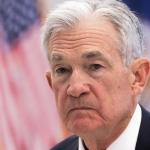The upcoming inflation report from the Bureau of Labor Statistics, set to be released on Wednesday, is poised to offer significant insights into the ongoing impact of President Donald Trump’s import tariffs on the American economy. With a focus on whether U.S. companies are absorbing these costs or passing them on to consumers, the report may shed light on the effectiveness of the president’s approach to tariffs and their role in inflation.
The monthly Consumer Price Index (CPI) is anticipated to show a 12-month increase of 2.4% for May, which is a slight uptick from April’s 2.3%. Economists also expect “core” inflation, which excludes volatile food and energy prices, to rise to 2.9% from 2.8% in the previous month. Month-on-month, the core inflation reading is predicted to climb to 0.3%, up from just 0.2%.
Since Trump implemented his “Liberation Day” tariffs, which raised U.S. import duty levels to 10%, business and consumer sentiment has taken a downturn. These tariffs were intended to protect American companies, but they have also led to a complex web of rising costs that businesses must navigate. Economists have pointed out that while Trump aimed to relieve prices for American consumers, the inherent nature of tariffs tends to result in higher prices for goods and services.
As price pressures mount, many companies are signaling that they will raise prices, despite the president’s exhortations to “eat” the tariff costs. Walmart recently announced that customers would soon see higher prices, which underscores a significant shift in the retail landscape. According to the National Federation of Independent Businesses, there was an increase in the percentage of small business owners planning to raise prices, from 28% in April to 31% last month.
Financial analyst Stephen Kates from Bankrate remarked that Walmart’s acknowledgment of impending price hikes is indicative of broader industry trends, stating, “If the largest businesses are saying this, smaller businesses are definitely feeling it, too.” With robust retail margins becoming increasingly strained, firms like Walmart are trying to manage these costs while maintaining competitiveness.
Additionally, the inflation report has broader implications for various sectors of the economy. Recent data from S&P Global showed that U.S. manufacturing reported the highest level of price increases since November 2022. Many firms, as noted in the Institute of Supply Management’s latest manufacturing report, highlighted that Trump’s tariffs have complicated their financial outlook, forcing them to reassess their pricing strategies in light of anticipated cost increases.
In contrast, if any price relief has been observed, it may be attributed to a slowing economy. Many consumers appear to be cutting back on discretionary spending, influenced by a weakening labor market. Bank of America’s reports indicate that spending rates have dwindled compared to pre-Trump levels, which influences inflation rates for travel-related expenses like airfare and hotel prices.
Even if the CPI data for May shows less aggressive price growth than expected, economists warn that the real effects of the tariffs may not be fully reflected until later in the summer. Historical patterns suggest that it can take time for the impact of tariff-induced price changes to manifest in consumer data. For instance, the price increases from Trump’s 2018 washing machine tariffs were not evident until months later, suggesting that the true ramifications of recent tariff changes will come into fuller view over time.
As we await the inflation data, it remains clear that the ramifications of these tariffs are being felt across the American economy, regardless of any immediate numbers reported in the CPI. The dynamics of consumer behavior and business pricing strategies are intricately linked to these policy decisions, and the inflation report will serve as a crucial indicator of how effectively American businesses are navigating this challenging terrain.
While consumers may hope for easing inflation rates, the reality is that even if price growth appears more moderate, the underlying pressures from existing tariffs and the economic climate will likely continue to create persistent financial challenges. Kates and other experts caution that consumers should expect ongoing price adjustments that could lead to lasting financial discomfort.
In summary, the impending inflation report will reveal whether companies have acquiesced to Trump’s directive to absorb tariff costs or whether they are shifting that burden onto consumers. Given the complex interplay between tariffs, consumer spending, and overall economic health, the results will be critical for understanding the future landscape of pricing and inflation in the U.S. economy. The ongoing dialogue surrounding tariffs, inflation, and their implications highlights the need for businesses and consumers alike to adapt to a constantly changing economic environment.
Source link










